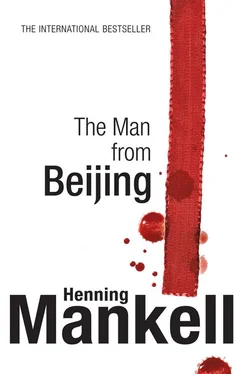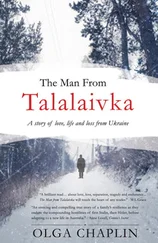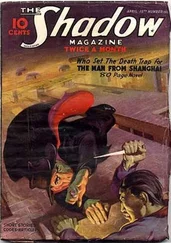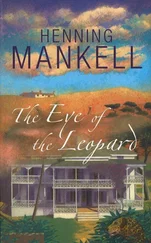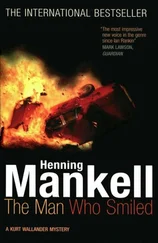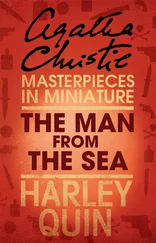A ship. People on the deck like ants, eagerly waving with handkerchiefs and hats. But he couldn’t see any faces.
No faces, only arms and hands, waving.
He waited a bit longer. Then he walked slowly over the road. He was carrying a little torch in one hand and his sword in the other.
He approached the house on the very edge of the village, heading west. He stopped to listen one last time.
Then he went inside.
Vivi,
This narrative is in a diary written by a man called Ya Ru. He had been given an oral report by the person who first went to Nevada, where he killed several people, and then continued to Hesjövallen. I want you to read it so that you can understand all the other things I’ve written in this letter.
None of these people are still alive. But the truth of what happened in Hesjövallen was bigger, far different from what we all thought. I’m not sure that everything I’ve written can be proved. It’s probably not possible. Just as, for instance, I can’t explain why the red ribbon ended up in the snow at Hesjövallen. We know who took it there, but that’s all.
Lars-Erik Valfridsson, who hanged himself in a police cell, was not guilty. At least his relatives ought to be told that. We can only speculate about why he took the blame on himself.
I understand that this letter will wreak havoc with your investigation. But what we are all searching for, of course, is clarity. I hope that what I have written can contribute to that.
I have tried to include everything I know about the case in this letter. The day we stop searching for the truth, which is never objective but under the best circumstances built on facts, is the day on which our system of justice collapses completely.
I’m back at work again now. I’m in Helsingborg and will expect you to be in touch, as there are a lot of questions, many of them difficult.
With best wishes,
Birgitta Roslin
7 August 2006
Birgitta Roslin did some shopping in her usual supermarket on the way home from work that same day in August. While standing in the queue at the checkout, she took one of the evening papers from its stand and leafed through it. On one page she read in passing that a lone wolf had been shot in a village north of Gävle.
Neither she nor anybody else knew that the same wolf had crossed into Sweden from Norway through Vauldalen one day in January. It had been hungry and not had anything to eat since finding the remains of a dead moose in Österdalarna.
The wolf had continued eastward, passed Nävjarna, crossed over the frozen Ljusnan River at Kåböle, and then vanished again into the vast forests.
Now it was lying dead on a farm near Gävle.
Nobody knew that on the morning of 13 January it had come to a remote village in Hälsingland by the name of Hesjövallen.
Everything had been covered in snow then. Now summer would soon be over.
The hamlet of Hesjövallen was empty. Nobody lived there any more. In some of the gardens rowanberries were already glowing red, with nobody to admire the splendid show of colour.
Autumn was closing in on Norrland. People were beginning to prepare themselves for another long winter.
This is a novel. That means that what I have written has a background in reality, but not all parts are a realistic reproduction of events that took place. I don’t think there is anywhere by the name of Hesjövallen — I hope my scrutiny of maps was sufficiently meticulous. But that the president of Zimbabwe is Robert Mugabe at the time of writing is an indisputable fact.
In other words, I have written about what could have happened, not necessarily what actually did happen. In the world of fiction that is not only a possibility, but the basic prerequisite.
But even in a novel, the most important details ought to be correctly presented, whether they refer to the presence of birds in present-day Beijing or whether or not a judge has a sofa provided by the National Judiciary Administration in his or her office.
Many people have assisted me in my work on this book. First and foremost, of course, Robert Johnson, who once again has worked persistently and meticulously with regard to establishing facts. But there are many more who, if named, would make this list very long. Not least many people in Africa with whom I have discussed the book.
I am not going to mention anybody else by name but hereby express my sincere gratitude to everybody concerned. The story itself is naturally my own responsibility and nobody else’s.
Henning Mankell
Maputo, Mozambique
January 2008
